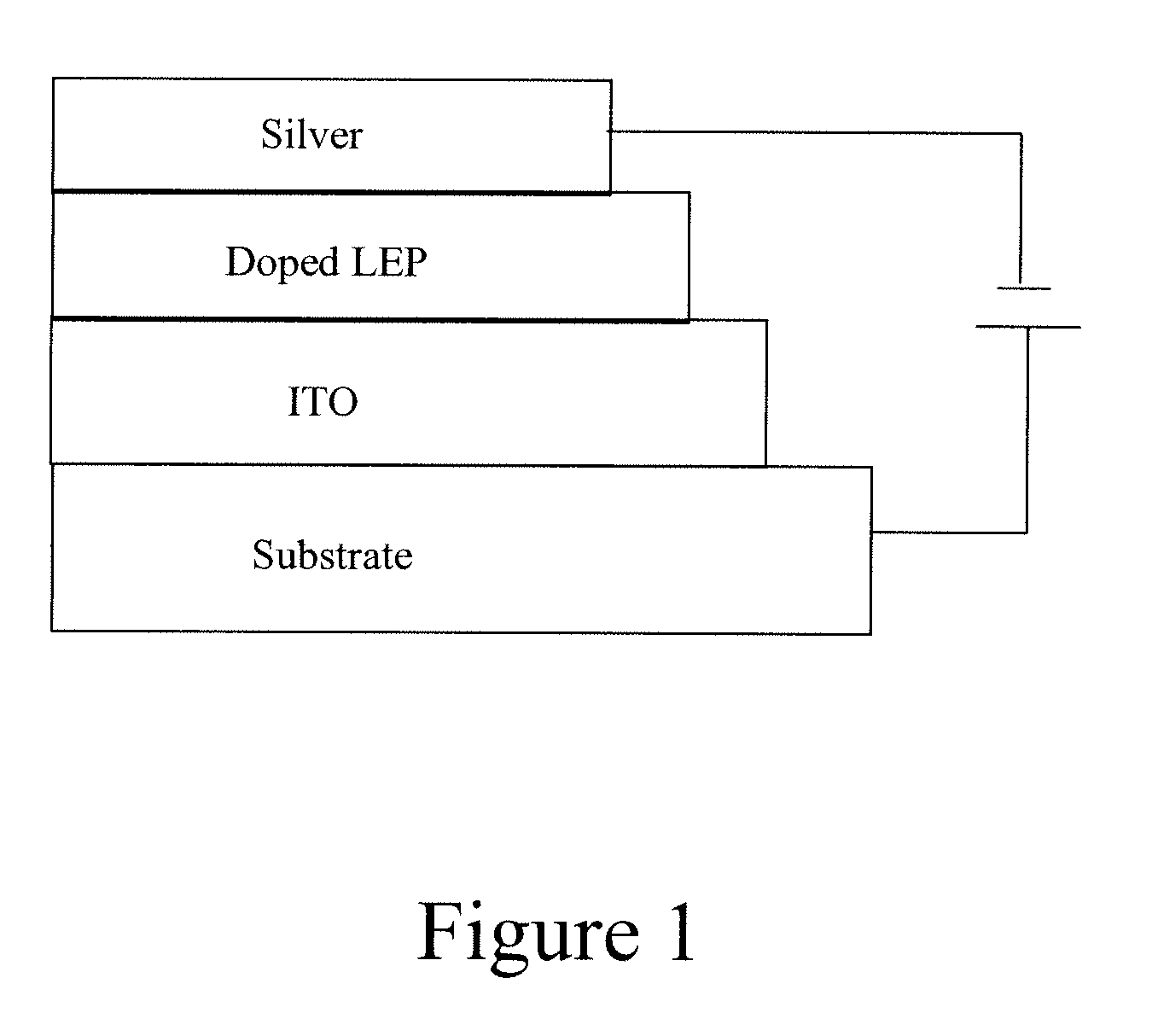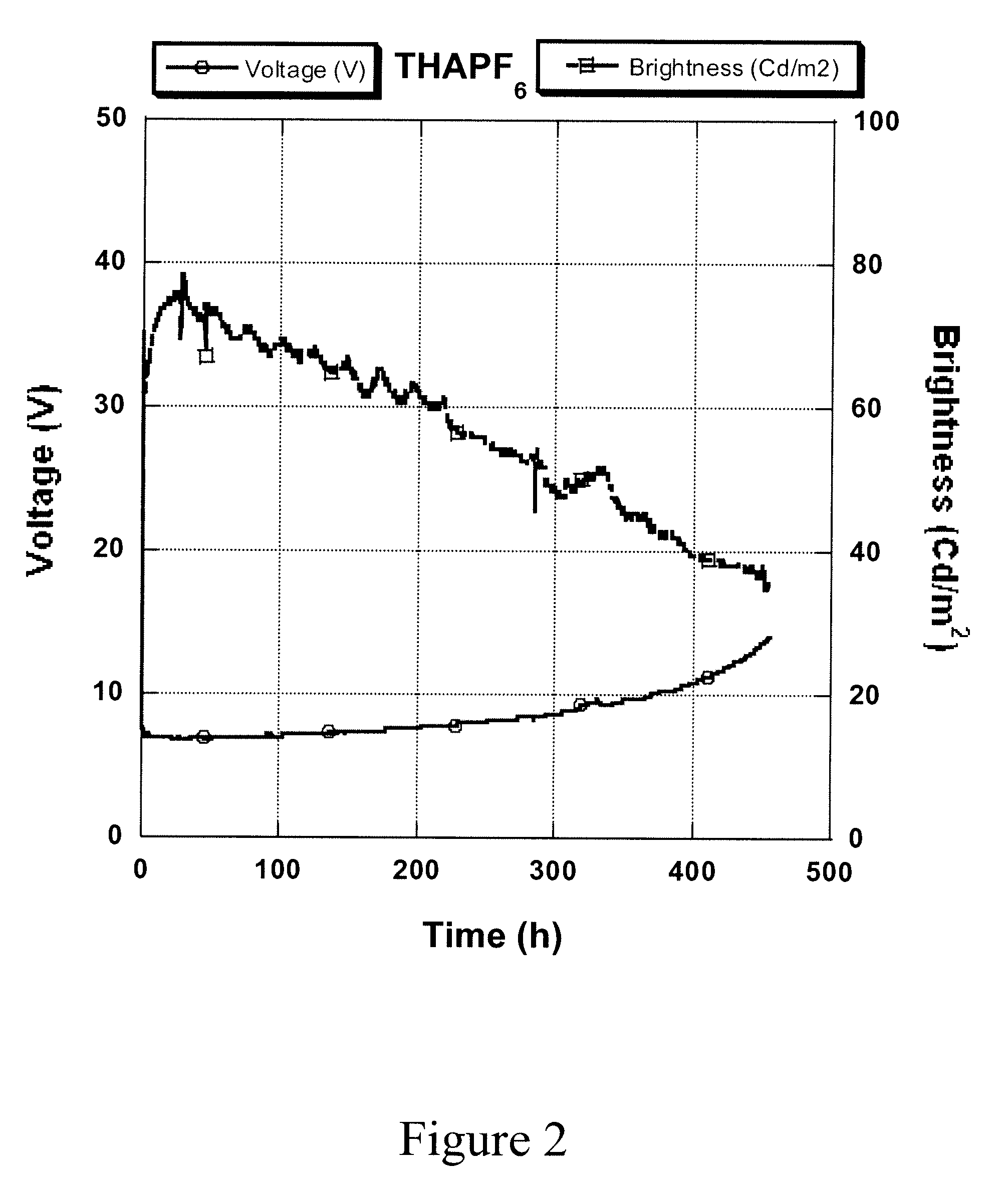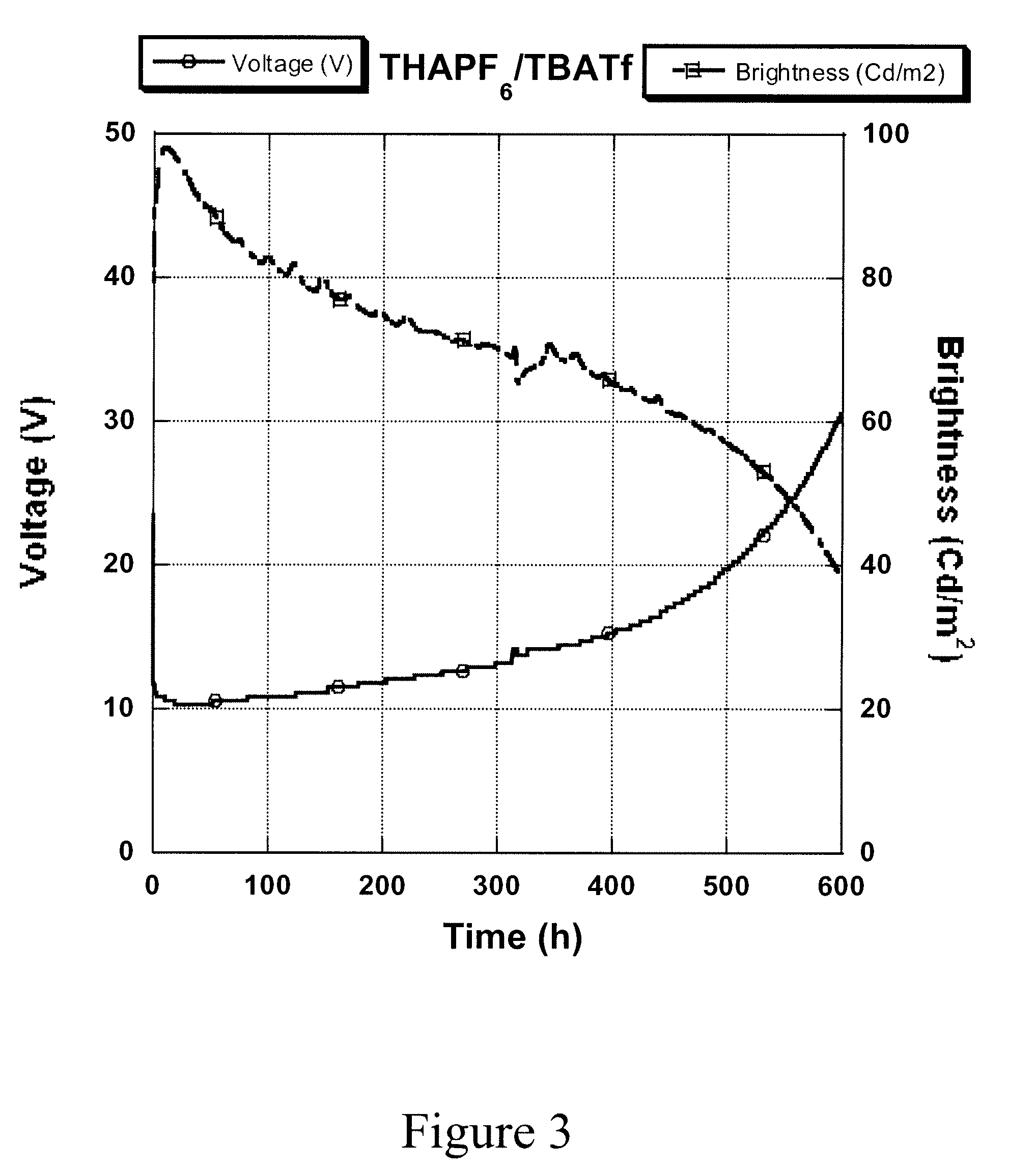Ionic salt combinations in polymer electroluminescent inks
a technology of electroluminescent inks and ionic salts, which is applied in the direction of luminescent compositions, inks, chemistry apparatuses and processes, etc., can solve the problems of limiting lifetime, poor interface between either electrode, and electron/hole imbalance, etc., and achieves long lifetimes, poor quantum efficiency, and fast switching speed
- Summary
- Abstract
- Description
- Claims
- Application Information
AI Technical Summary
Benefits of technology
Problems solved by technology
Method used
Image
Examples
example 1
Single Salt-Based Ink Formulation
[0026]In a glove box filled with nitrogen, a polyphenylene vinylene (PPV) yellow polymer (0.045 g, MW 1 million, Merck), polyethyleneoxide (PEO) (0.018 g, MW 5 million, Polyscience), and tetrahexylammonium hexafluorophosphate (THAPF6) (5.7 mg, Sigma-Aldrich) were mixed together in solvents of chlorobenzene (3 g) and m-xylene (4.5 g). After thoroughly mixing, the ink was transferred out from the glove box and screen-printed onto a pre-patterned indium tin oxide (ITO)-coated polyethylene terephthalate (PET) substrate with an active area of 1 cm2. After removing the solvents by heating the substrate, the top electrode (Ag) from a silver paste was printed onto the luminescent polymer layer, to complete the device fabrication. The device was then transferred into a nitrogen glove box and tested under a constant current density at 2 mA / cm2. Both photocurrent and voltage were recorded as function of time. This device had maximum luminescence brightness of 7...
example 2
Binary Salt-Based Ink Formulation
First Formulation
[0027]This ink was formulated in a similar way as described above for Example 1, using a mixture of tetrabutylammonium trifluoromethanesulfonate (TBATf) and THAPF6. Under a constant current density at 2 mA / cm2, its printed device had a maximum luminescence at 84 cd / m2 (FIG. 3).
example 3
Binary Salt-Based Ink Formulation
Second Formulation
[0028]This ink was formulated in a similar way as described above for Example 1, using a mixture of THAPF6 and tribenzyl-n-octylammonium hexafluorophosphate (BzOAPF6). Under a constant current density at 2 mA / cm2, its printed device had a maximum luminescence at 78 cd / m2 (FIG. 4).
PUM
| Property | Measurement | Unit |
|---|---|---|
| area | aaaaa | aaaaa |
| constant current density | aaaaa | aaaaa |
| luminescence brightness | aaaaa | aaaaa |
Abstract
Description
Claims
Application Information
 Login to View More
Login to View More - R&D
- Intellectual Property
- Life Sciences
- Materials
- Tech Scout
- Unparalleled Data Quality
- Higher Quality Content
- 60% Fewer Hallucinations
Browse by: Latest US Patents, China's latest patents, Technical Efficacy Thesaurus, Application Domain, Technology Topic, Popular Technical Reports.
© 2025 PatSnap. All rights reserved.Legal|Privacy policy|Modern Slavery Act Transparency Statement|Sitemap|About US| Contact US: help@patsnap.com



